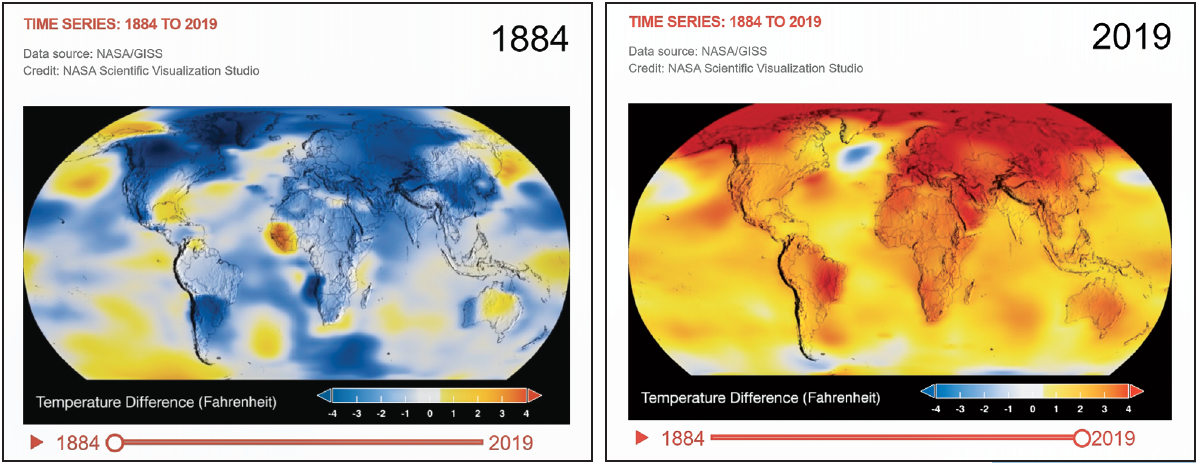Texas exceptionalism has not spared the state from an increase in extreme weather events.
From 2000 to 2019, there have been 7,348 major natural disasters around the world, according to a new United Nations report. Rising temperatures and climate changes are behind the “staggering rise” in extreme weather events, which killed 1.23 million people and resulted in $2.97 trillion in global economic losses over the last 20 years, the report concluded.
Andrew Dessler, climate scientist and professor of atmospheric sciences at Texas A&M said scientists are examining changing weather patterns and the direct consequences of climate change on the earth to learn more about current — and future — severe natural disasters.
“We know a bunch of ways that climate is going to change the world we live in,” Dessler said. “Temperatures are going to go up, so we’re going to get more heat waves. Similarly, we’ll get less cold temperatures.”
Dessler said as the climate changes, Texas will see increased precipitation and rainfall events as well as more intense natural disasters like Hurricane Harvey.
“It’s not the case that climate change is the reason we had all these storms,” Dessler explained. “However, climate change is making the storms that do occur more intense.”
Stronger storms with winds that blow harder produce more rain, Dessler said, and because sea levels are higher, storm surges are worse.
The chances of more powerful hurricanes are higher now, associate professor of atmospheric sciences at A&M Robert Korty said.
“There have always been Category 5 hurricanes and they’re still rare, but the probability in any year of reaching that is higher now,” Korty said.
Earth’s warming from greenhouse gases, melting ice and a flux of heat from the ocean to the atmosphere explain how climate change impacts natural disasters, Korty said.
“A large contributor is melting ice in polar regions,” Korty said. “As that ice melts into the oceans it adds mass. It adds more water to the liquid water in the oceans than there had been recently.”
As global infrastructure grows, so grows economic risks posed by natural disasters, said Texas State Climatologist John Nielson-Gammon, Ph.D. and Regents Professor of Atmospheric Sciences at A&M.
“There’s a clear increase in damages caused by natural disasters on a global scale,” Nielson-Gammon said. “The largest factor there is the increase in the value of global infrastructure: there’s more to be damaged, and it’s worth more.”
2020 has seen a record 16 weather and climate disaster events with losses exceeding $1 billion in costs, the most ever through nine months of any year, according to the National Oceanic and Atmospheric Administration Office. The previous U.S. average was 6.6 weather and climate disaster events costing at least $1 billion yearly from 1980 to 2019, according to NOAA.
Korty said it’s important to recognize that current weather is based on events from previous years. Efforts to slow down climate change now won’t be observed for some time, he said.
“The climate takes a while to respond, so what we see now is, in some sense, a response to what has happened decades ago,” Korty said.
Trying to label a specific weather event as a consequence of climate change doesn’t work, Julie Loisel said. Specializing in paleoclimatology and environmental change, Loisel is an assistant professor in Texas A&M’s Department of Geography and has a Ph.D. in Earth and Environmental Sciences.
“It’s true that you cannot just say ‘Hey this one specific storm is because of climate change,’ but there are things that you can say,” Loisel said. “For example, sea surface temperatures have been increasing, and we know that in theory, when you have a warmer ocean you should be able to generate stronger hurricanes.
“The climate is changing over decades and centuries, and so to say that a long-term trend is impacting one specific thing or event is really hard,” Loisel said.
A domino effect can be observed for the relationship between climate change components and natural disasters, Loisel said.
“The carbon that’s frozen and inactive [in permafrost] can become food for microbes and bacteria, which will eat that carbon and ‘fart’ CO2 or methane back into the atmosphere,” Loisel said. “That’s an example of a kind of domino effect or what we call a positive feedback loop.”
Korty said he expected the current trend of melting polar ice, warmer oceans and atmosphere to continue. Evidence suggests that making changes now can solve climate change in the future, he added.
“Changing course will have benefits toward the second half of the century,” Korty explained.
This story is a collaboration between The Battalion and upperclassmen in Texas A&M’s journalism degree. To see the online copy of the Climate Change extra print edition, click here.




















